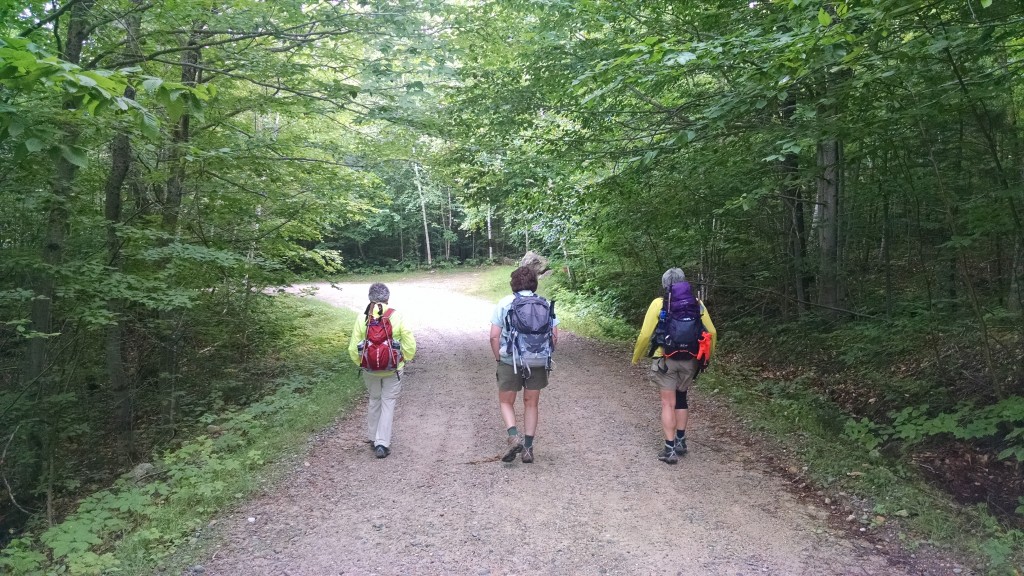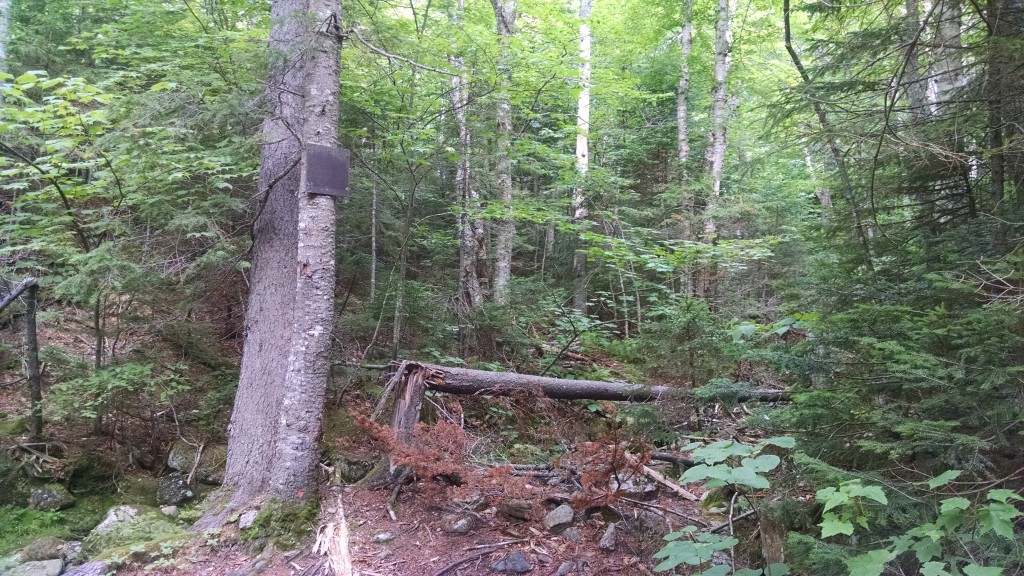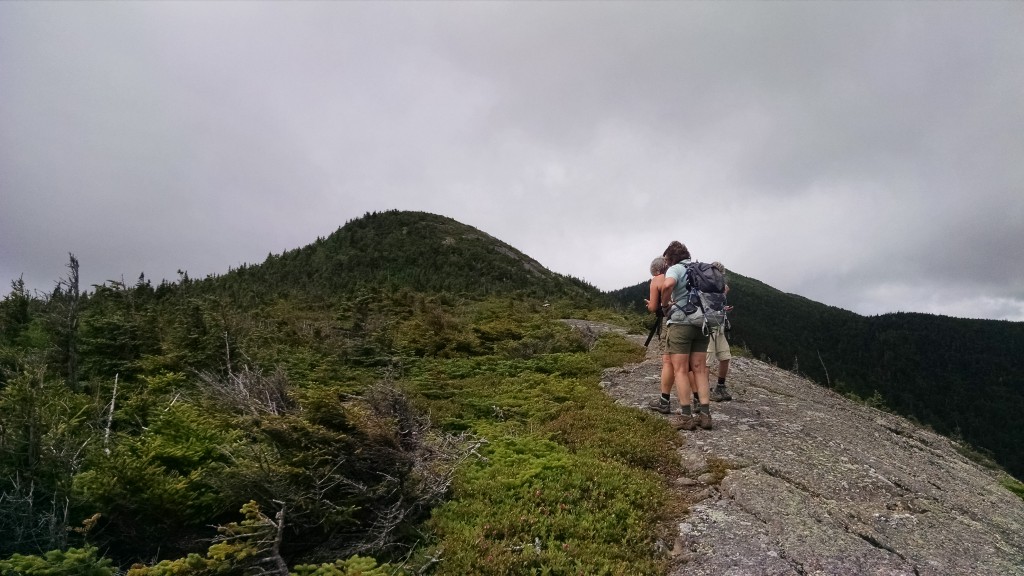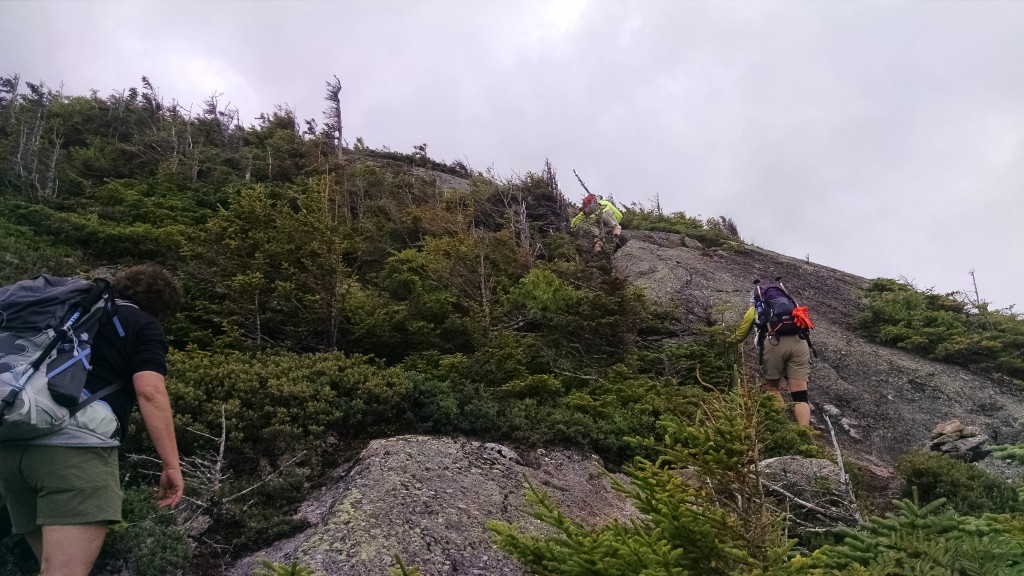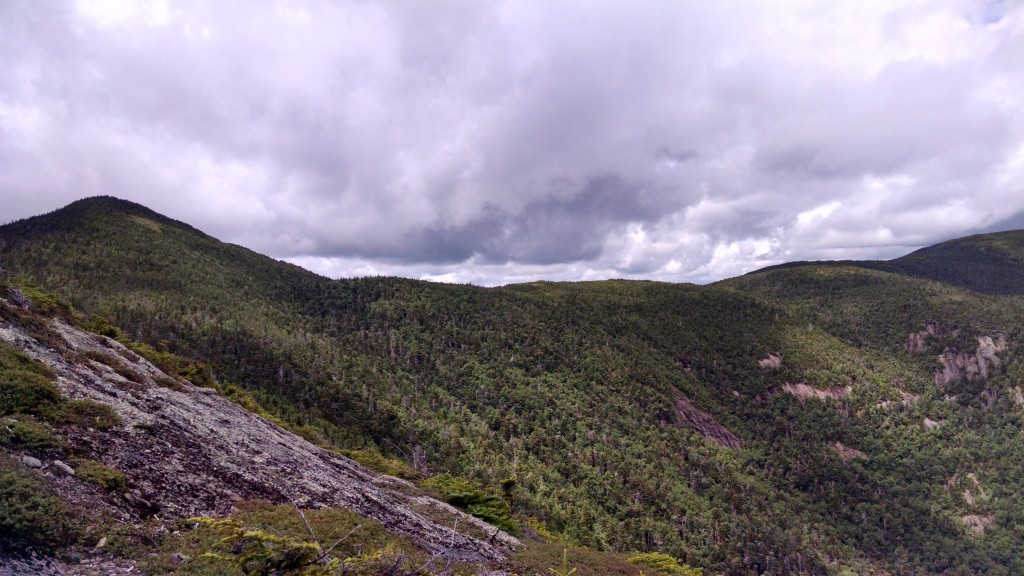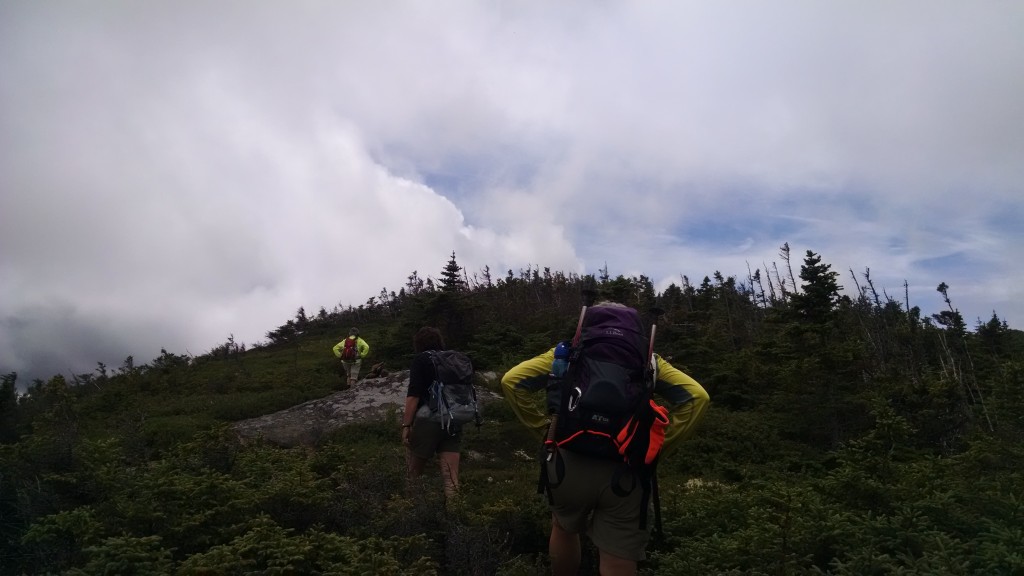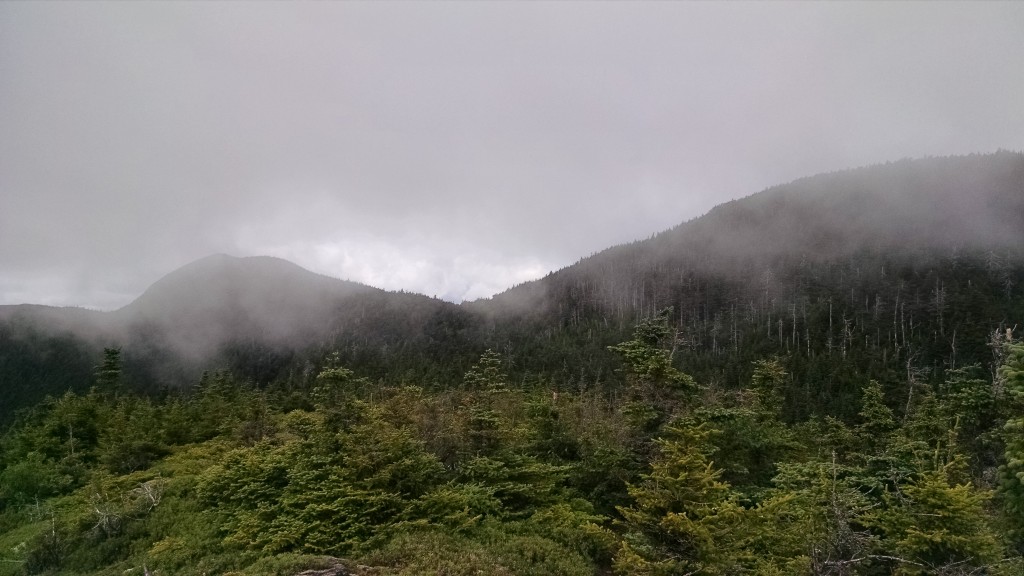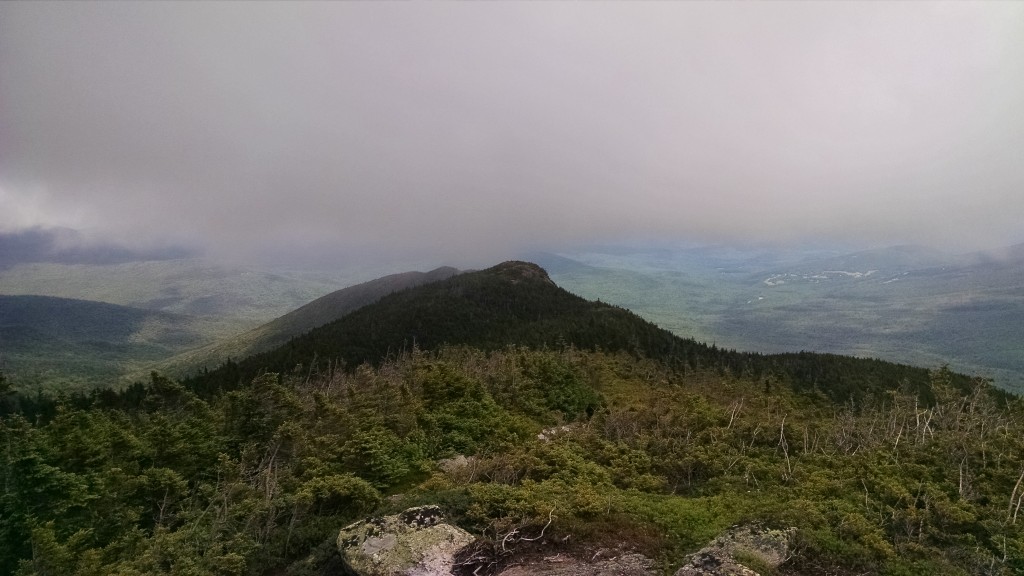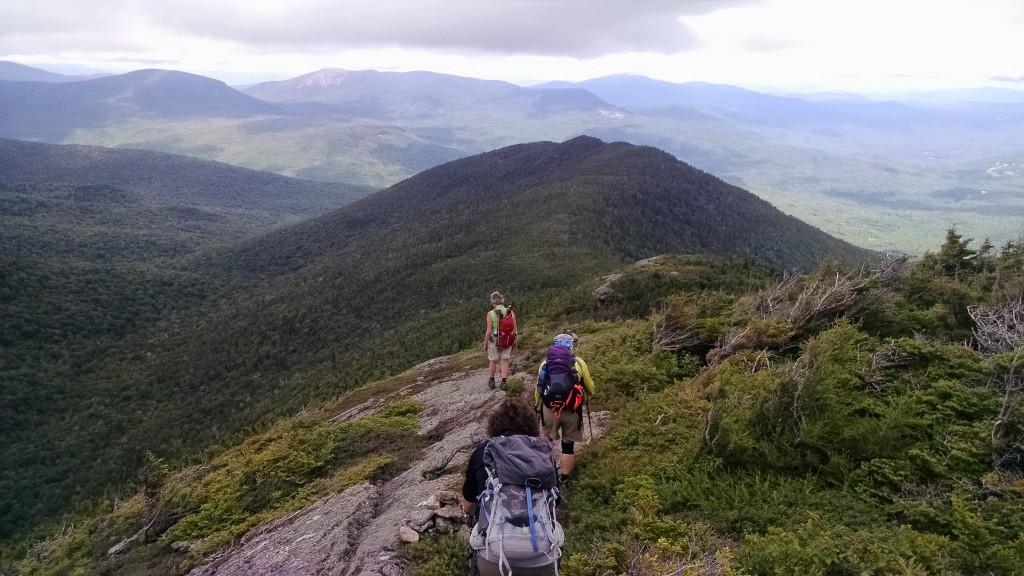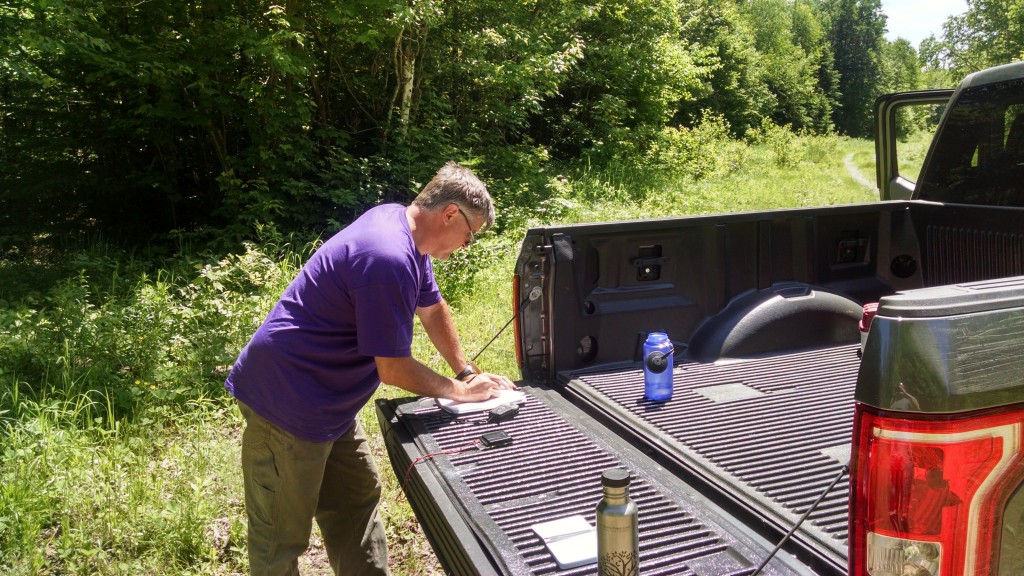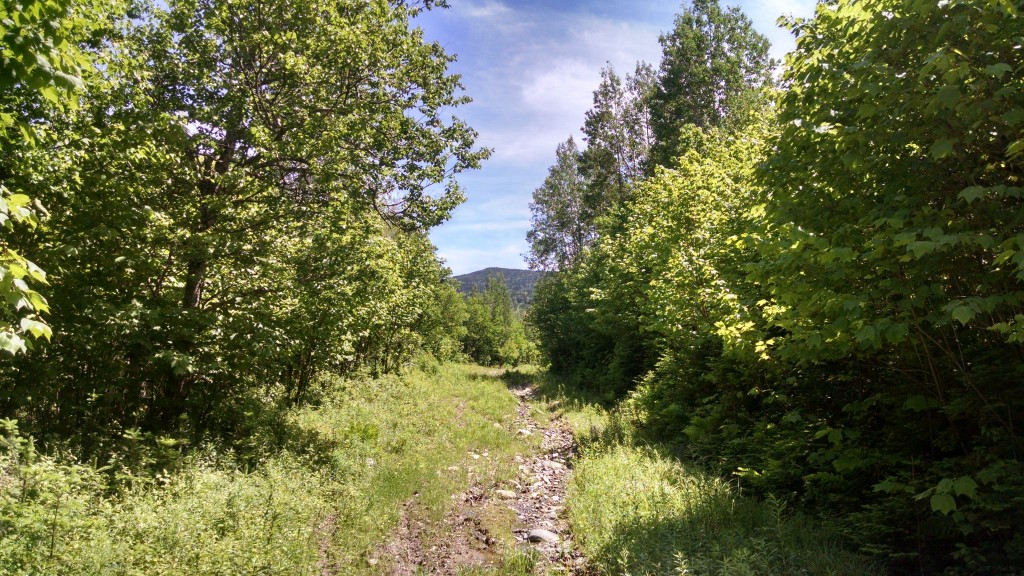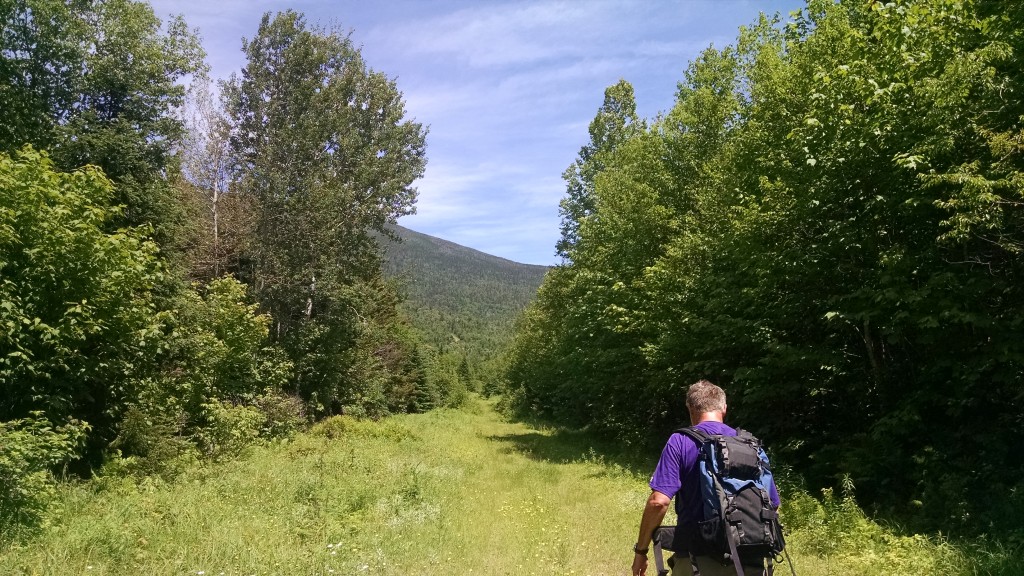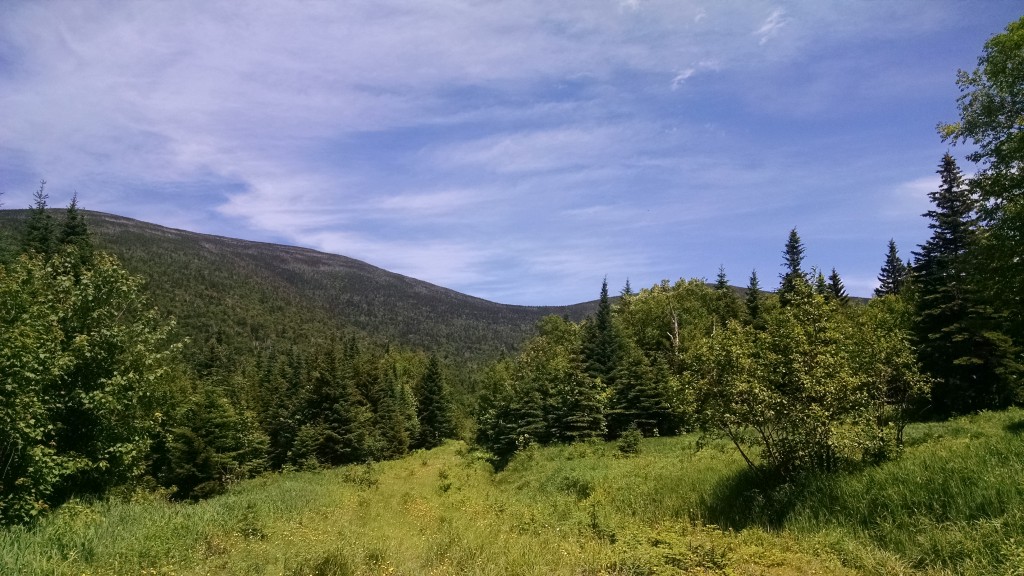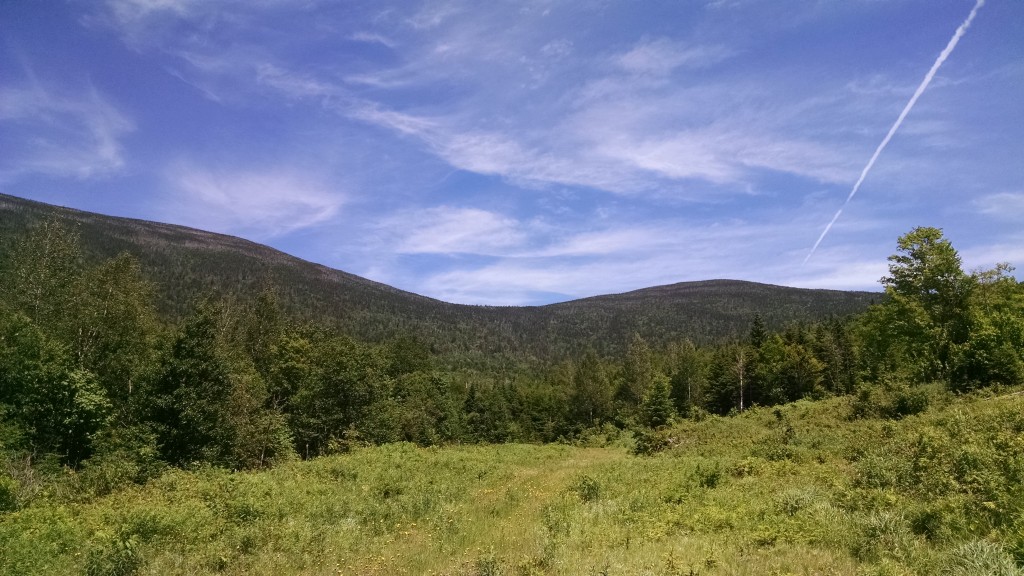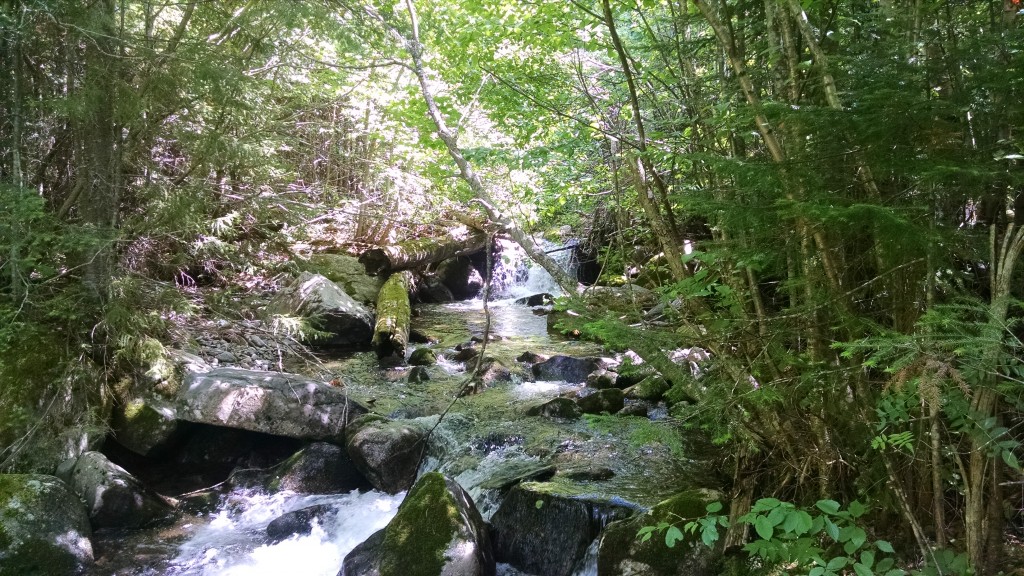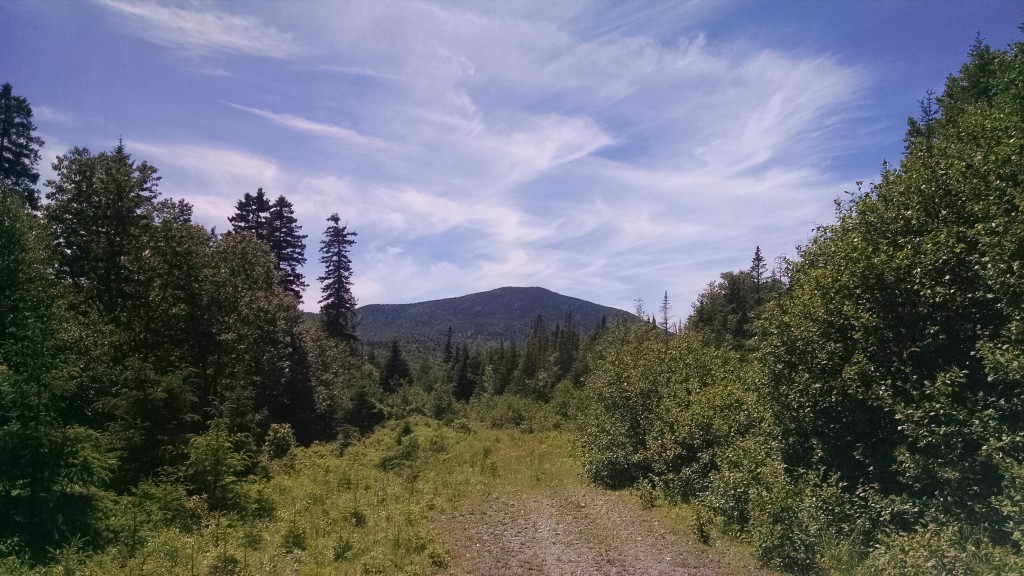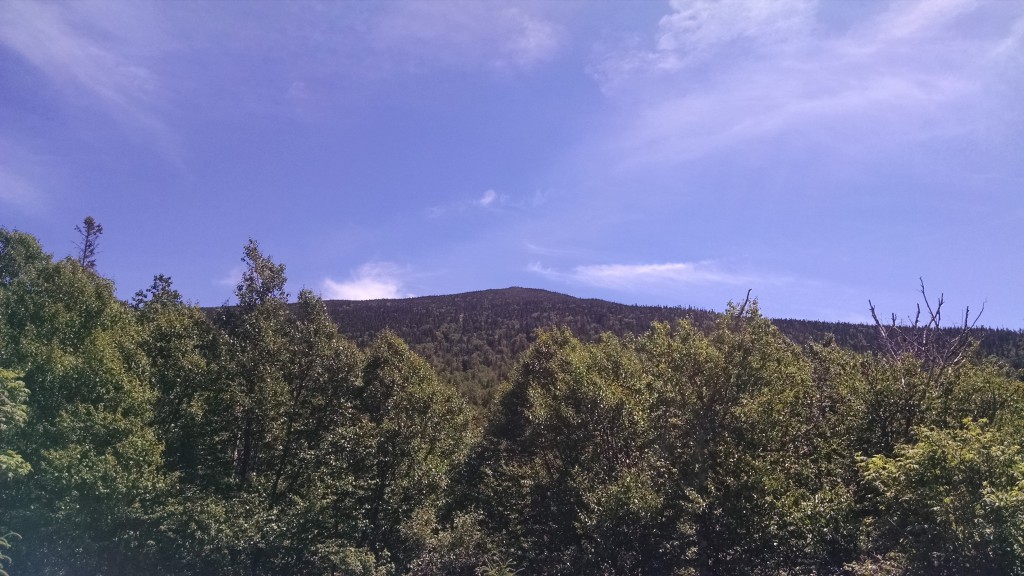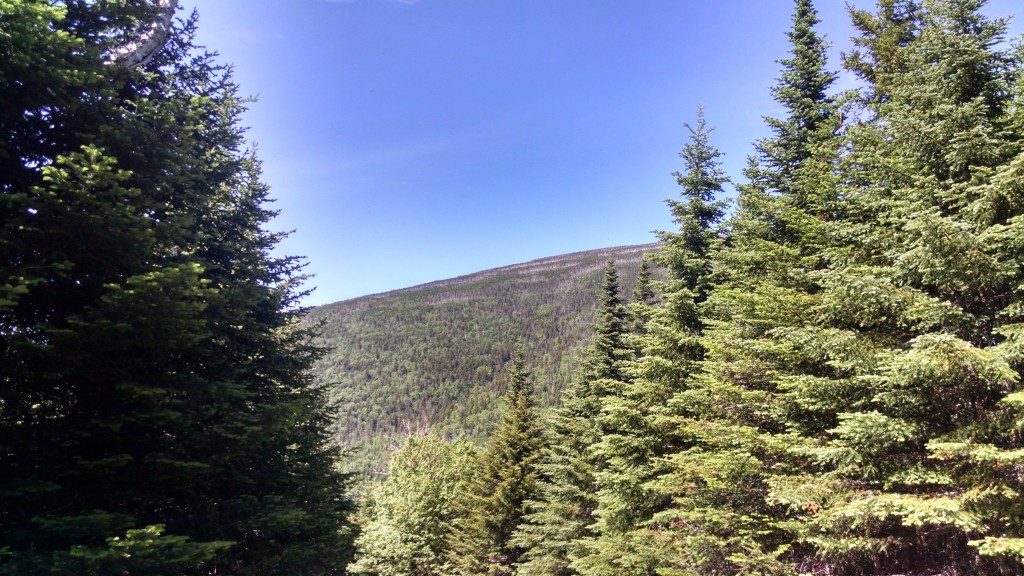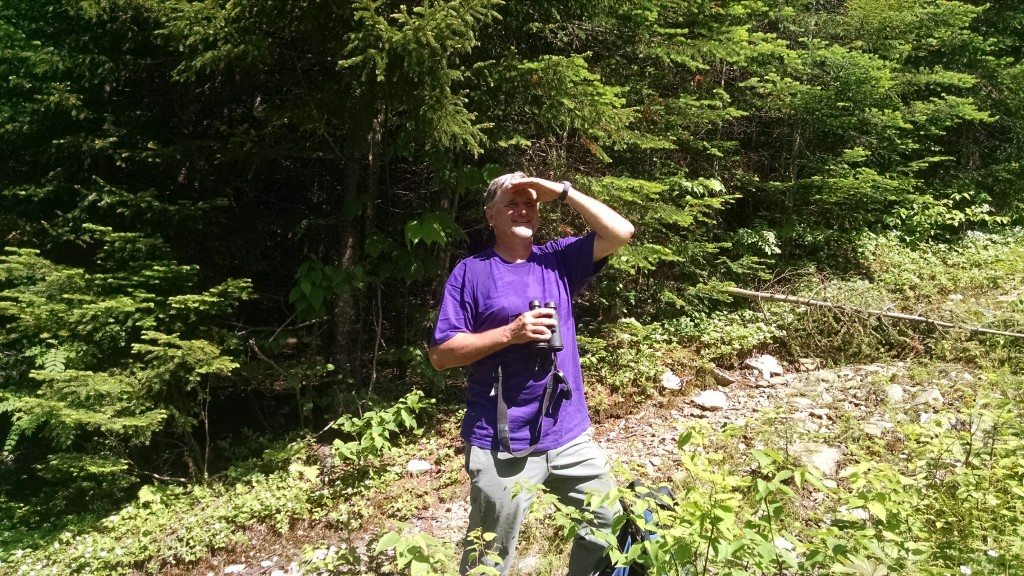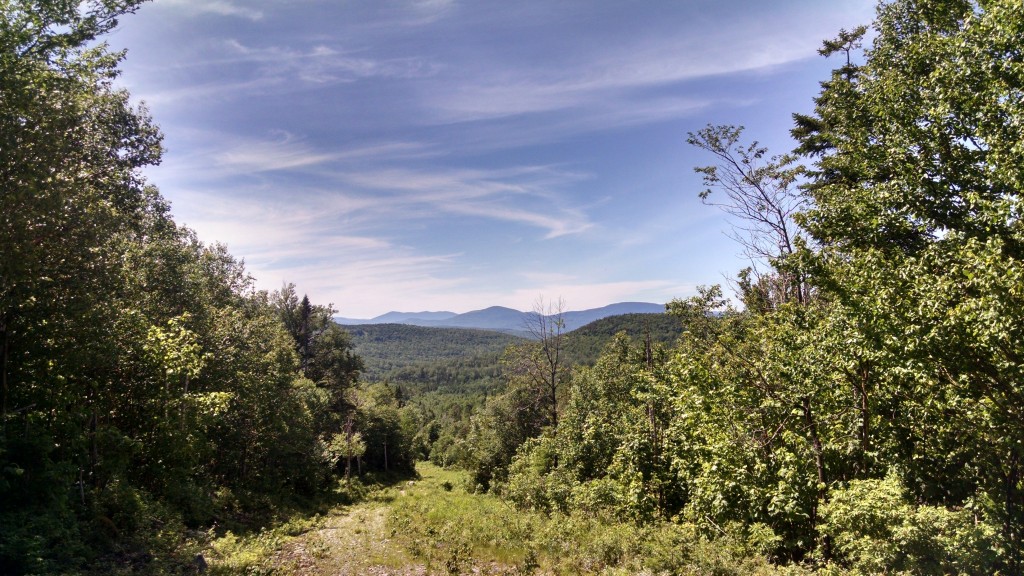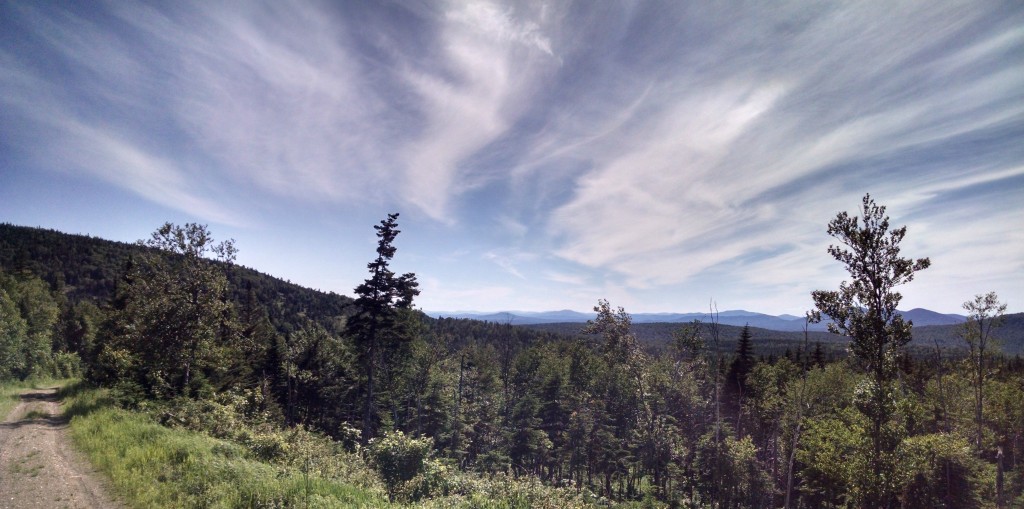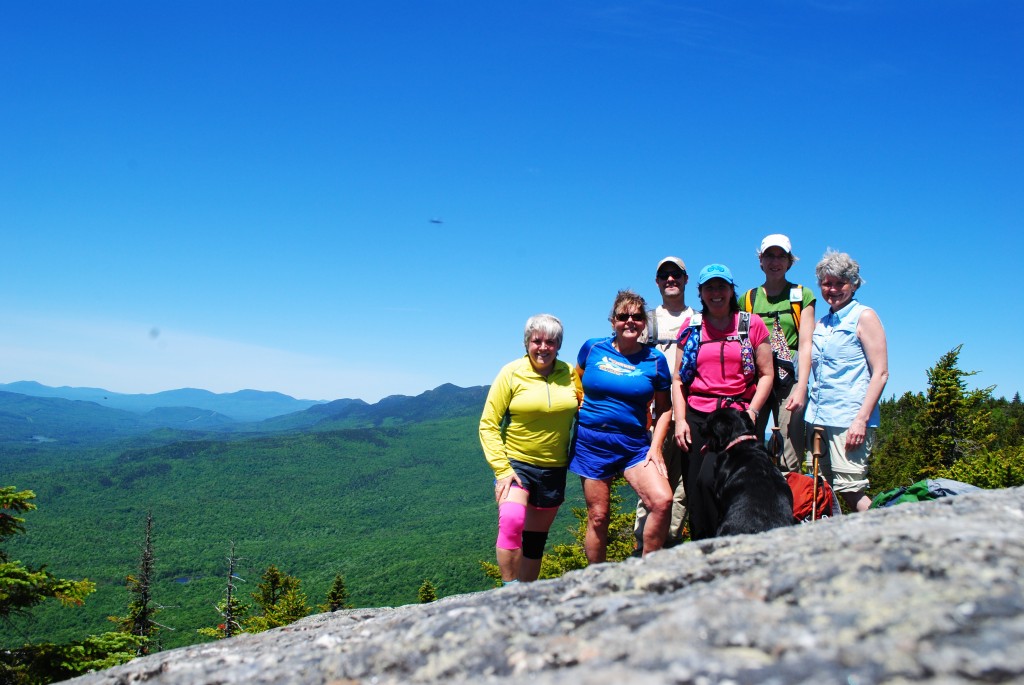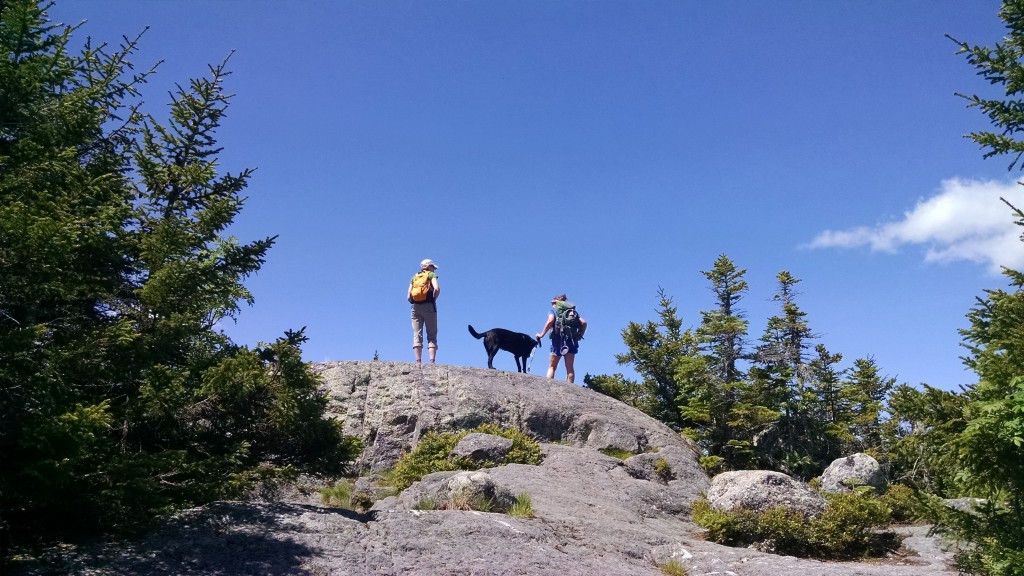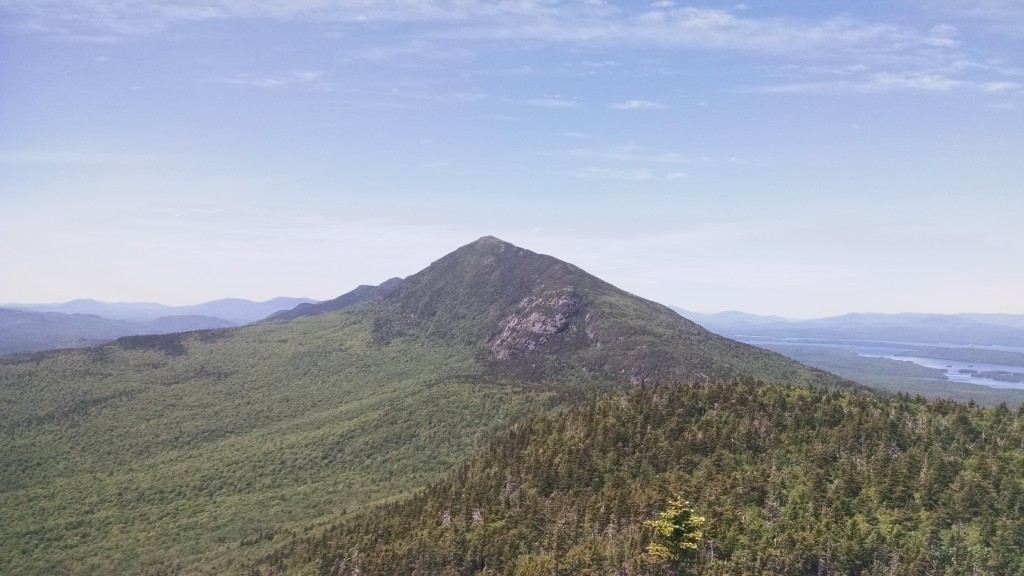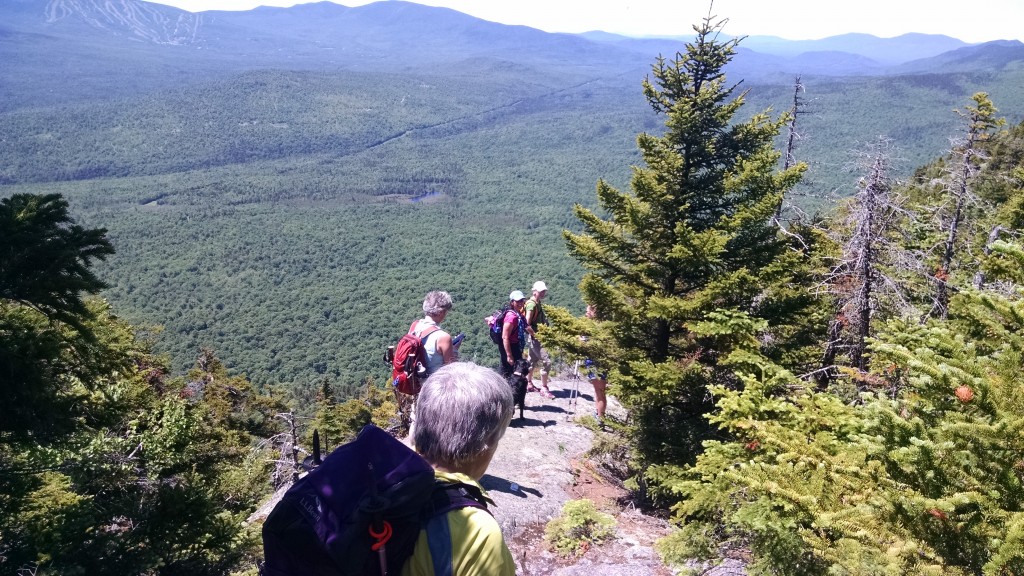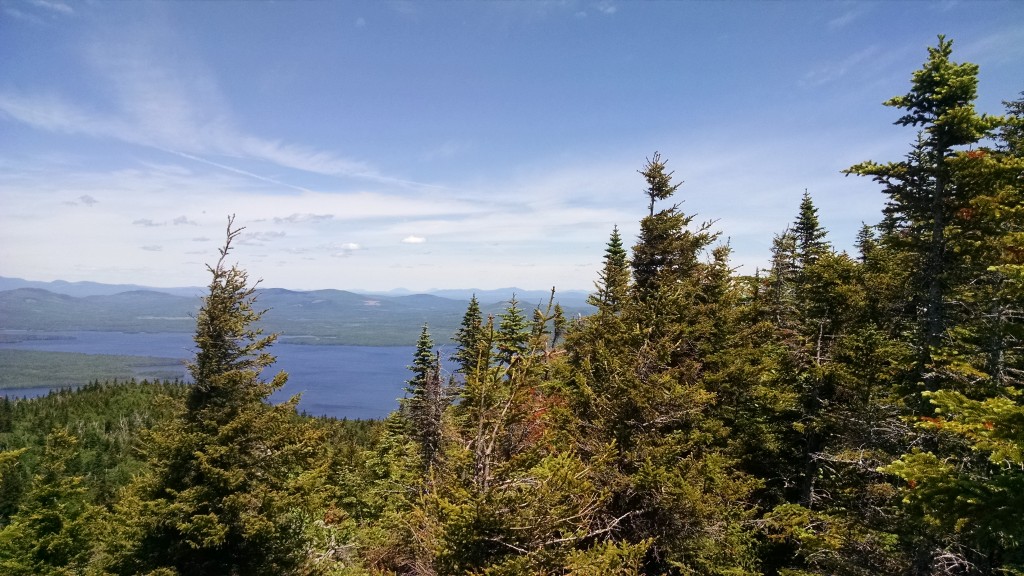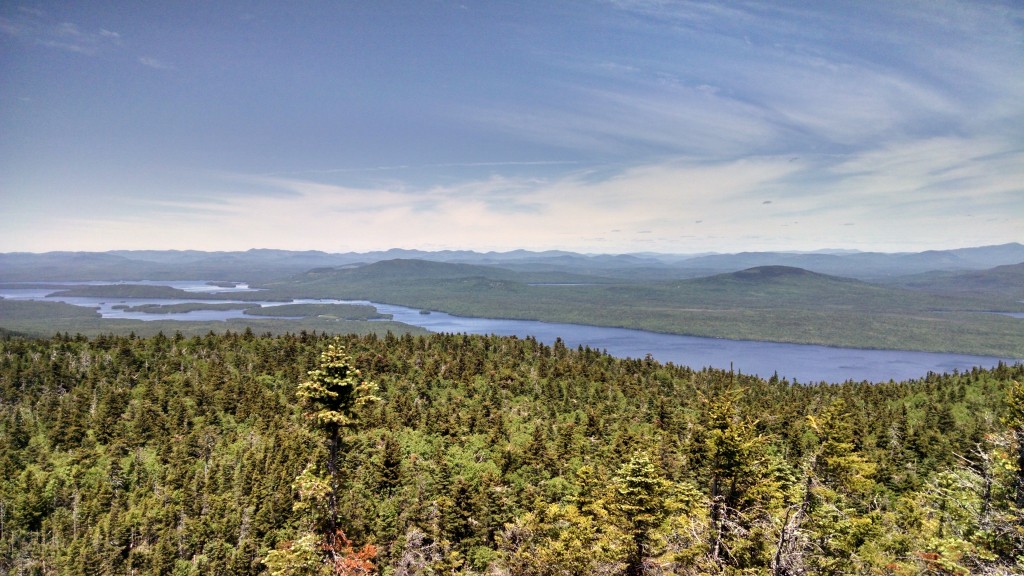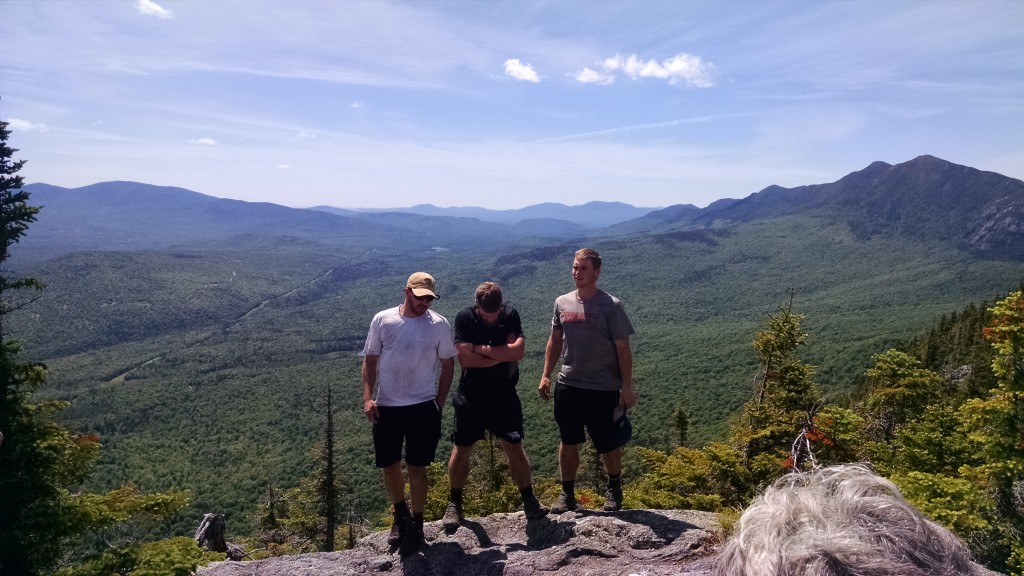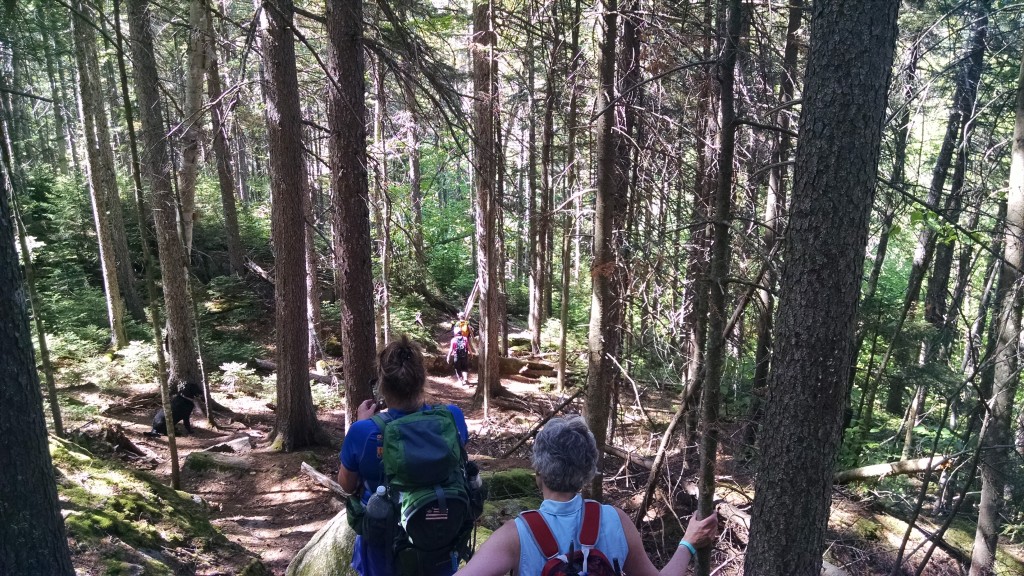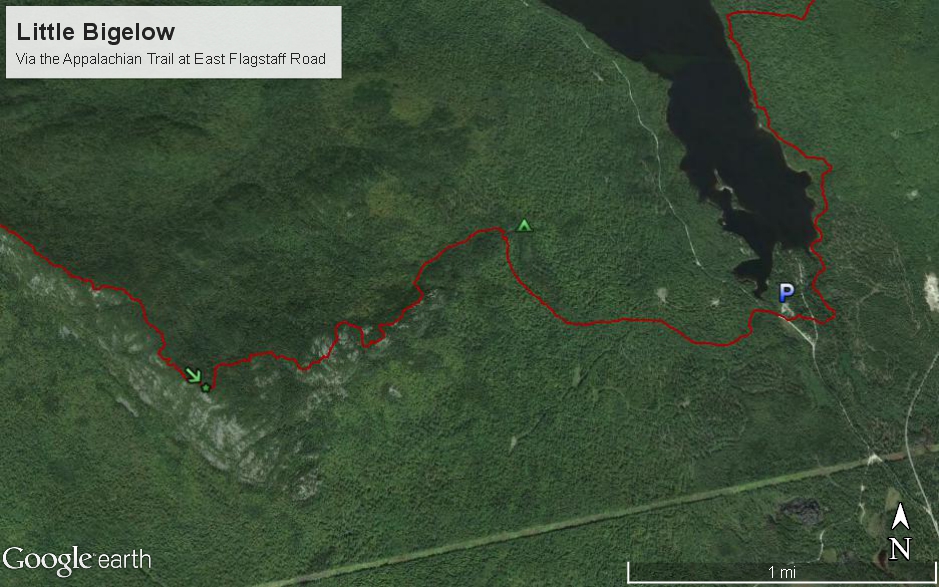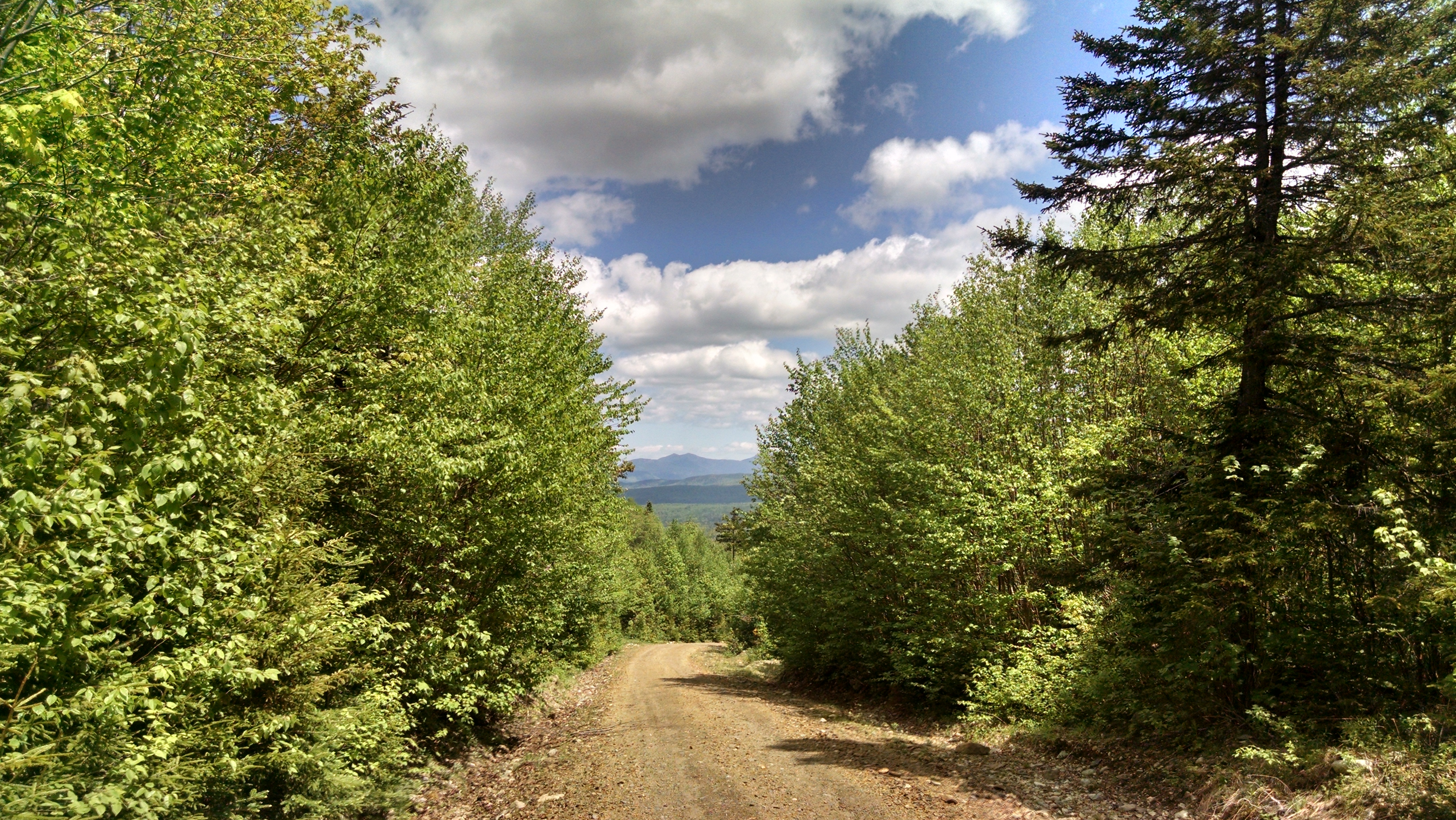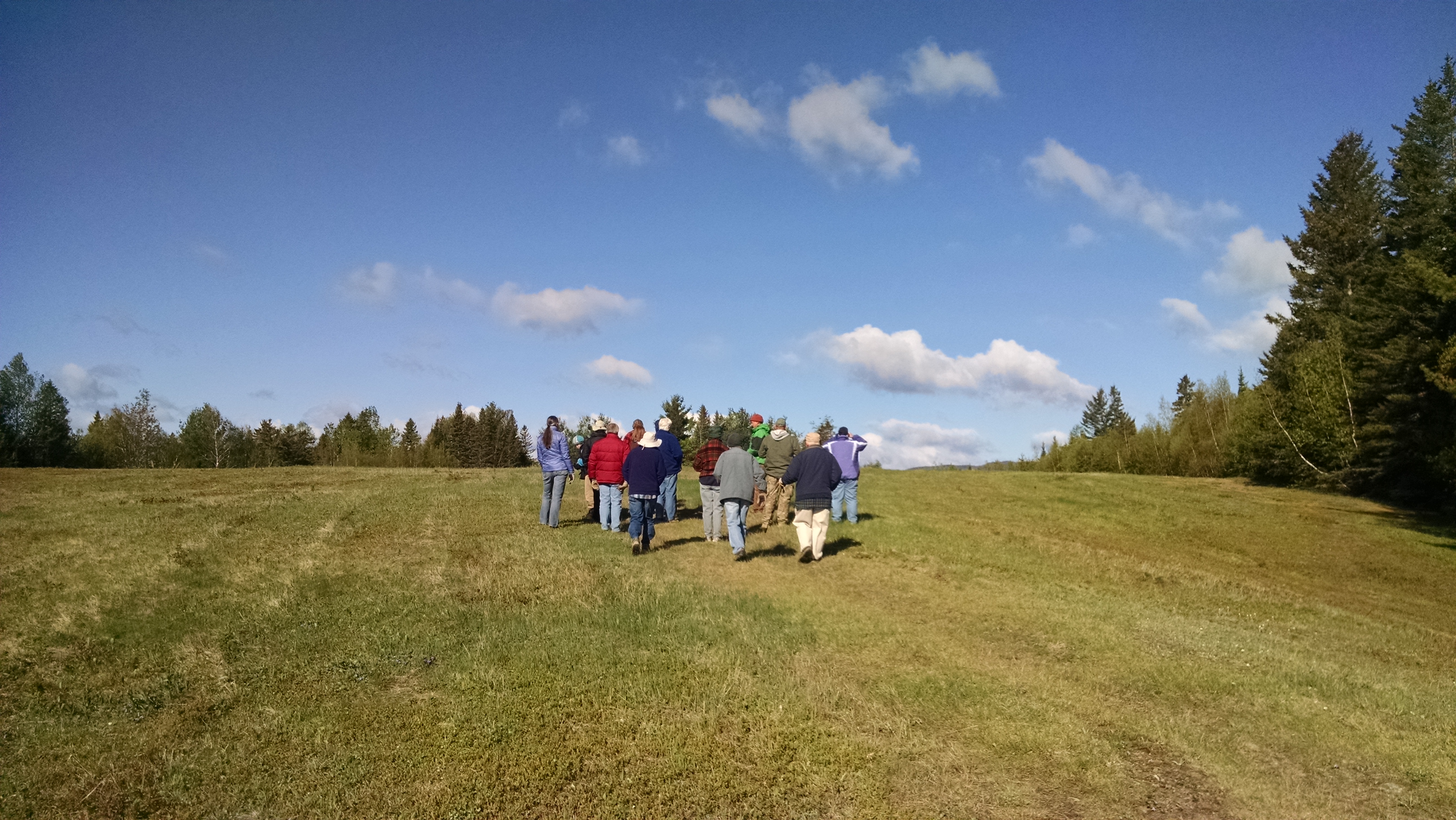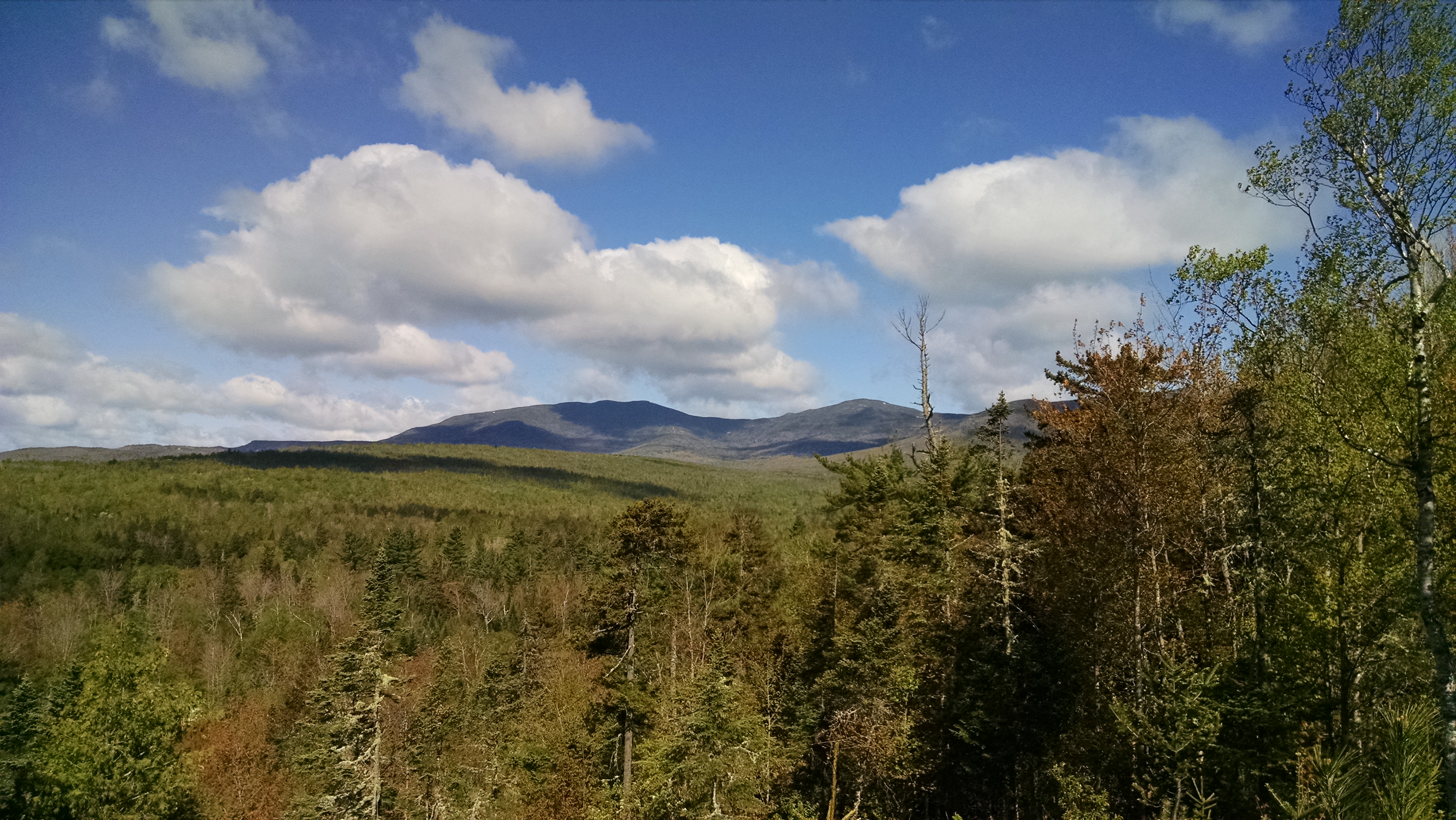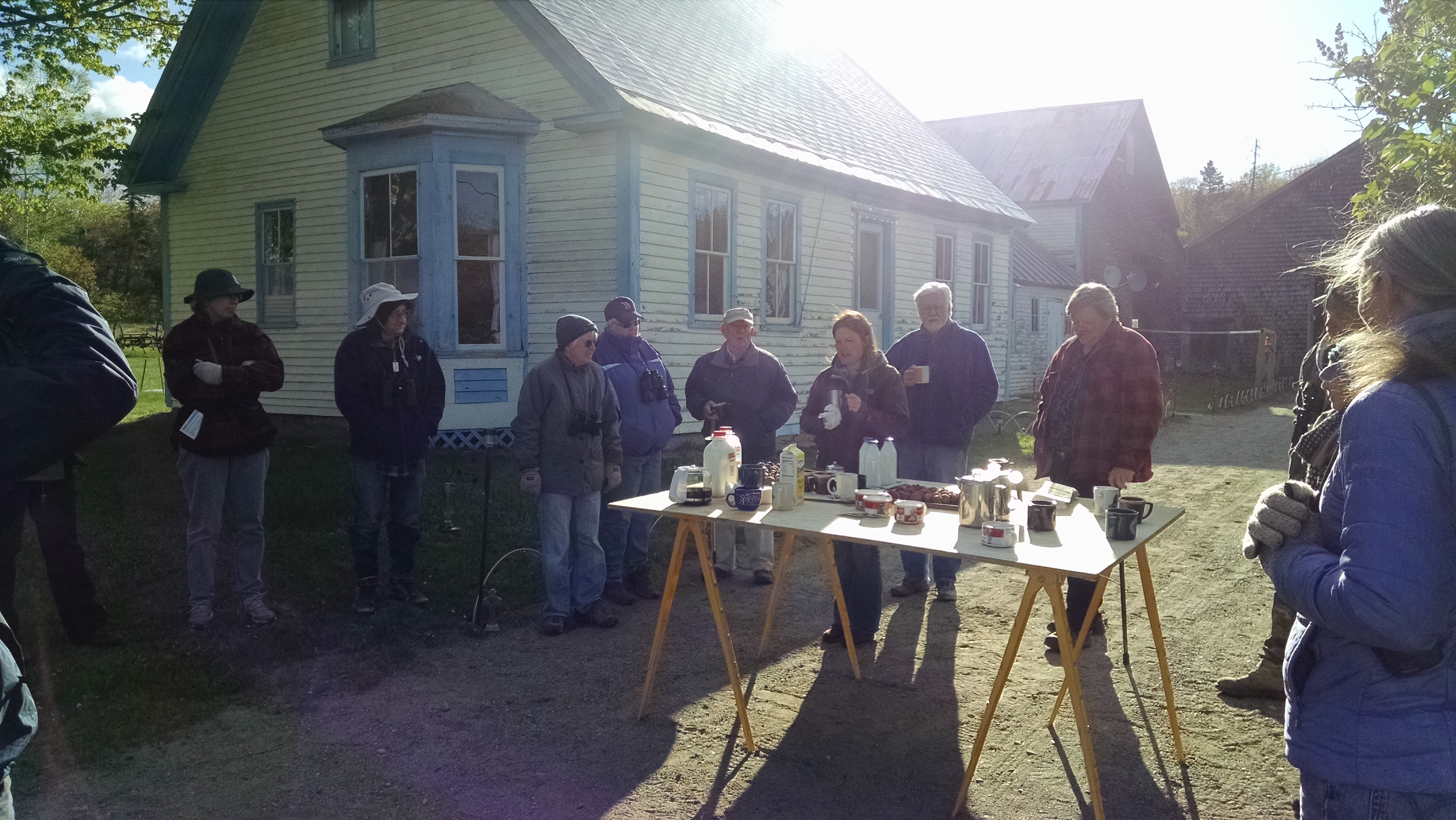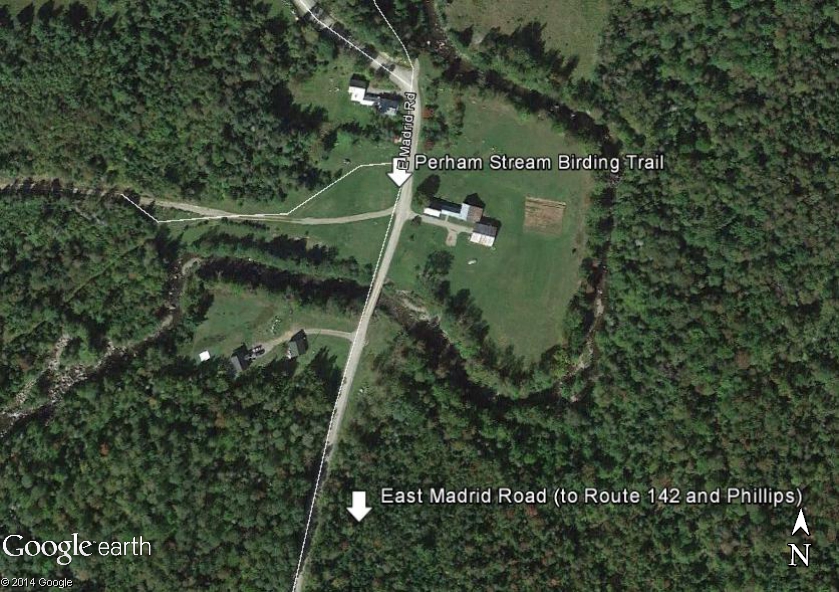Maine A.T. Land Trust Executive Director Simon Rucker headed out on a Saturday morning with a hardy group of three to tackle Goose Eye Mountain via the Wright Trail, an official Appalachian Trail side trail. The weather was cool-ish and mostly cloudy with a few sunny breaks and a slight chance of showers. One member of the group had previously hiked the Wright Trail and had slipped on a wet rock in Goose Eye Brook – she was looking to replace that experience with a better one and I’m pretty sure she succeeded!
After reaching the campsite where the former north branch of the Wright Trail used to head off, the group proceeded over steep terrain on what was fortunately a well-maintained trail, thanks to Maine Appalachian Trail Club. Eventually they reached treeline and for the next mile headed west along the ridge. Goose Eye is a large mountain with three peaks and several knobs which are more or less peaks in their own right. The group reached a knob just below the East Peak (3,762 feet) before the junction with the Appalachian Trail and decided to head back. There was some weather coming in from the west and the group had a long hike back to the trailhead.
And boy did it seem long! Fortunately the company was good and the weather held until we got back to the car. Thanks to Debi, Deborah and Linda for a great outing!

